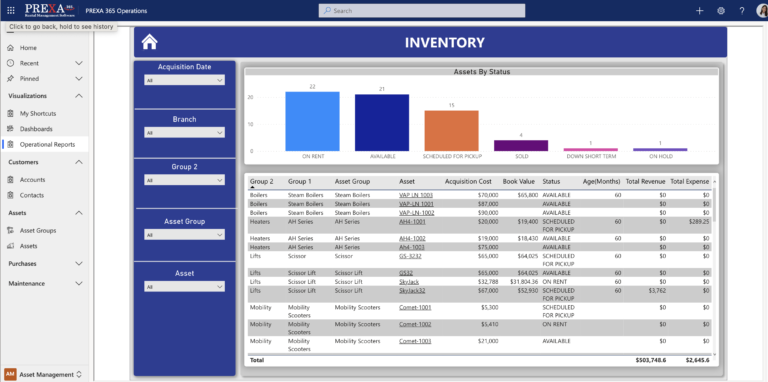Employee Monitoring Software: Empowering Workplaces for Success

In today’s rapidly evolving business landscape, organizations are continuously seeking ways to optimize productivity, ensure security, and maintain compliance. One solution that has gained significant traction in recent years is Employee Monitoring Software. This article explores the role of monitoring software for employees in modern workplaces, its key features, benefits, compliance considerations, real-world use cases, selection criteria, implementation best practices, and future trends.
Contents [show]
Employee Monitoring Software Overview
Employee Monitoring Software is a comprehensive solution designed to track and monitor employee activities within an organization. It encompasses a range of features such as time tracking, screen monitoring, activity logging, and reporting capabilities. Its primary role is to provide insights into employee behavior, enhance productivity, and ensure compliance with organizational policies and regulatory requirements.
Key Features of Employee Monitoring Software
One of the essential features of Employee Monitoring Software is time tracking, which allows employers to monitor the amount of time employees spend on various tasks and projects. Screen monitoring enables real-time observation of employee screens, providing visibility into their activities and ensuring they remain focused on work-related tasks. Activity logging records employee actions, including website visits, application usage, and file access, enabling employers to identify potential productivity bottlenecks or security risks. Reporting capabilities allow for the analysis of collected data, providing actionable insights for management decision-making.
Benefits of Employee Monitoring Software
Employee Monitoring Software offers a plethora of benefits for both employers and employees. For employers, it facilitates increased productivity by identifying inefficiencies and optimizing workflow processes. It also helps reduce operational costs by eliminating time theft and unauthorized activities. Additionally, Employee Monitoring Software enhances remote work management, allowing employers to monitor and support distributed teams effectively. For employees, it promotes accountability and transparency, fostering a culture of trust and collaboration within the organization.
Compliance and Privacy
While Employee Monitoring Software offers numerous benefits, it also raises concerns about privacy and compliance with data loss prevention tools. It is essential for organizations to implement the software ethically and legally, ensuring employee consent, transparency, and adherence to regulatory frameworks such as GDPR and HIPAA. Employers must clearly communicate the purpose and scope of monitoring activities to employees and establish policies that respect their privacy rights while balancing organizational needs for security and compliance.
Use Cases
Employee Monitoring Software finds applications across various industries and business functions. For example, in the healthcare sector, it helps ensure compliance with patient confidentiality regulations by monitoring employee access to sensitive medical records. In the retail industry, it aids in inventory management by tracking employee interactions with point-of-sale systems. Moreover, in the professional services sector, it enables project tracking and resource allocation, ensuring optimal utilization of resources and timely delivery of client projects.
Choosing the Right Software
Selecting the most suitable Employee Monitoring Software requires careful consideration of several factors. Organizations should evaluate the software’s scalability, integrations with existing systems, user-friendliness, and cost-effectiveness. It is also crucial to assess vendor reputation, customer support, and ongoing maintenance requirements. By conducting thorough research and leveraging trial periods or demos, organizations can make informed decisions that align with their specific business needs and objectives.
Implementation
Successful implementation of Employee Monitoring Software hinges on effective communication and collaboration between employers and employees. Organizations should clearly communicate the rationale behind implementing the software, emphasizing its benefits for both parties. It is essential to establish transparent policies and procedures governing the use of monitoring tools, addressing employee concerns and ensuring compliance with applicable regulations. Regular training sessions and ongoing support are also vital to ensure the smooth adoption and integration of the software into the organization’s culture and workflow.
Trends and Future Outlook
Looking ahead, Employee Monitoring Software is poised to evolve further to meet the changing needs of modern workplaces. With the rise of remote work and hybrid work models, there is an increasing demand for solutions that offer seamless integration with collaboration tools and productivity platforms. Artificial intelligence and machine learning capabilities are expected to play a more significant role in data analysis and predictive analytics, enabling organizations to anticipate and address productivity challenges proactively. Moreover, the focus on employee well-being and work-life balance is likely to drive the development of monitoring solutions that prioritize employee autonomy and flexibility while still ensuring organizational performance and compliance.
Conclusion
Employee Monitoring Software serves as a valuable tool for empowering workplaces to thrive in today’s competitive environment. By providing insights into employee behavior, optimizing productivity, and ensuring compliance, it enables organizations to achieve their strategic objectives while fostering a culture of transparency and accountability. As the workplace continues to evolve, Employee Monitoring Software will remain a crucial component of organizational success, driving productivity, efficiency, and innovation.
Also Read: Everything You Should Know Regarding Supplier Relationship Management Software





